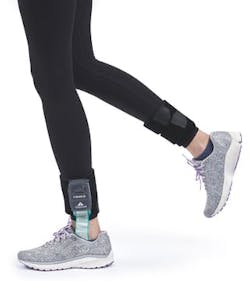The Next Decade of Tactile Sensing: Sensor Connectivity and Analytics
What you'll learn:
- Why sensor connectivity implementation affects performance.
- How analytics plays into sensor connectivity.
Sensor connectors tend to get overlooked and become an afterthought in system designs, but they can have critical impact on application performance. Connectors add resistance to measurement circuitry, and any variation in the connector electrical performance will introduce variability in sensor measurement accuracy.
Variation may occur in manufacturing tolerances or how connectors are placed and secured from device to device, causing different sensor outputs between devices. These component variations can be corrected during sensor calibration as part of manufacturing test and quality control to adjust sensor outputs via component or software compensation.
Furthermore, variation may crop up over time due to connector flexing, vibrations, or thermal stress, especially in “high flex” environments such as smart textiles. These expected component tolerances must be well understood and either accepted in their contribution to overall output variations or tightly controlled to mitigate their impact where performance is compromised. Many product designers underestimate the impact of proper sensor connector engineering only to regret it later when field issues occur.
Connector Types
Traditional ZIF, tab, and pin connectors using mechanical compression onto conductive traces and substrates are common to interconnect sensor conductors with board electronics. Due to the high-mix, low-volume nature of many printed flexible sensor applications, such connectors are often manually attached to sensor substrates and conductors, introducing potential human error variation. However, these can usually be corrected during calibration.
High-volume applications may justify expensive automated connector machinery investments and custom fixtures to reduce per unit cost as well as assure repeatability. For applications requiring periodic sensor replacement due to wear or other reasons, pogo pin connectors provide a fairly reliable and repeatable connection. However, they need enough space to accommodate them.
As an alternative to mechanical connectors, some designers are employing z-axis conductive tapes or adhesives or conductive epoxies to bond conductive traces to other circuit elements on electronics boards. These adhesives, when cured properly, provide reliable electrical bonding in low mechanical stress environments and may simplify and thus reduce connector costs. This approach is also becoming more common in wearable consumer devices, where space restrictions and miniaturization prohibit the use of mechanical connectors.
Application of Sensors
When utilizing printed sensors in applications, many benefit from the customization and flexibility of the form factor. With these benefits come nuances to the sensing technology, which can be managed if they’re understood and characterized.
For continuous sensing use over time, periodic calibration may be required to ensure sensor output levels remain representative of expected measurement values. In applications where differential values are important, such as quadrant pressure differences to measure toggle orientation and force, calibration is less of a concern as all sensor elements will typically age similarly.
>>Check out the other parts of this series
For applications in which absolute values are critical, such as measurement of a liquid storage tank’s ground contact plate pressure over time to estimate changes in liquid levels, then sensor drift may be problematic and require periodic recalibration. Software-based calibration can be adequate when sensor drift is relatively predictable over time and estimated using compensation tables based on age.
In more dynamic situations where sensors may experience more volatile environmental conditions, then a reference sensor may be used to establish a reference measurement whose output is used to automatically recalibrate the main sensor or sensor array. For example, a low-drift force plate sensor may be used to recalibrate an entire foot mat pressure-mapping array each time the consumer stands on a floor measurement kiosk mat.
It's important for the designer to understand the causes and nature of drift in their sensor design. For instance, a constant static force load on a thin-film force sensor may induce significantly more drift than a fluctuating load.
Connected Sensors: Fueling IoT and Predictive Analytics
Sensor signals streamed from large numbers of local or remote locations require data connectivity through Wi-Fi, Bluetooth, or other networking methods to enable Internet of Things applications.
For thin route networks where communication data rates are limited, recent advances in edge computing can process and interpret sensor image data locally using embedded computing. Therefore, only small bits of data need to be sent remotely to trigger action, such as a warning flag that elevator brakes will require maintenance service within six months.
The rise of “sensors everywhere” is a precursor to accumulating large quantities of sensor profiles needed for effective machine learning. As tactile sensors become more standardized and widely embedded, opportunities to collect and mine sensor I/O data in bulk will generate new machine-learning model insights that further enhance sensor utility.
For example, insole pressure sensors that map pressure profiles while walking can now be streamed in real-time or in batches to cloud collectors via Wi-Fi- or Bluetooth-enabled smartphone apps (see figure).
When merged and mined with periodic clinical data, these profiles can reveal new insights for physical therapy monitoring of emerging health issues, such as precursors for growing loss of balance due to Alzheimer’s, or improper gait requiring insole replacement.
Looking Ahead: The Future of Tactile Sensing
The coming decade is set to mark a pivotal era for tactile-sensing technologies, characterized by a dual thrust of innovation and practical application. On one hand, we'll see a diverse array of emerging technologies being harnessed to unlock new capabilities, signaling an era of experimentation and discovery. On the other, there will be a strategic focus on refining a selection of cost-effective sensor technologies that promise to become the backbone of mainstream and niche markets alike.
Such convergence is expected to foster a rich ecosystem of sensor-based applications, supported by advances in printed flexible electronics and additive manufacturing. This will make it feasible to produce even the most sophisticated sensors in small volumes without compromising on cost.
In anticipation of these transformative shifts, businesses must double down on their commitment to the future. Industry leaders should aim not only to pioneer the development of novel sensor designs and manufacturing techniques, but also forge strong partnerships across the technological, market, and application spectrums.
Companies like Tekscan, for example, are preparing for this next step-change in the market: There’s investment in research and engineering to evaluate and incubate new sensor designs and manufacturing technologies while continuing to develop mainstream applications in collaboration with a wide variety of technology, market, and application partners through the Tekscan TactileLab.
These collaborative endeavors are crucial, as they lay the groundwork for integrating tactile-sensing technologies into a broader range of applications, ensuring that the next wave of innovations will not only be groundbreaking, but also widely accessible and applicable.
>>Check out the other parts of this series
About the Author

John Jutila
CEO, Tekscan
John Jutila is CEO of Tekscan, a global leader of tactile sensor solutions. John previously held CEO positions at Ripley Tools, a supplier of infrastructure installation solutions, and Champion ONE, an optical networking technology company, as well as several positions at Nokia, including VP Strategy & Operations for Global Strategic Alliances, COO of the Strategic Industries Division EMEA Region, and North American Division President for Optical Fiber solutions.
John has also held key executive positions at Asahi Kasei/Polypore for microporous membrane technology, InterDigital for advanced mobile phone technology, and HP/EDS for IT outsourcing. He holds a DBA from Grenoble Ecole de Management, an MBA from the University of Toledo, and a BBA in Venture Management from The Wharton School.


